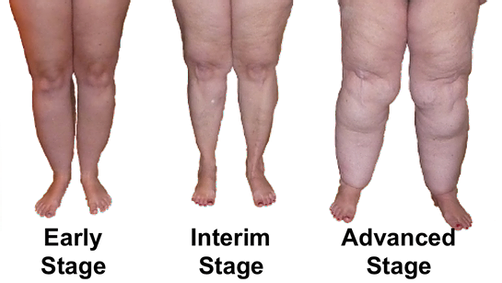What is LIPEDEMA?
Lipedema Stages
Stage I: Skin surface is normal, tissues will begin to exhibit a smooth nodular texture.
Stage II: Skin surface becomes uneven and is described as coarse, nodular skin surface with larger fatty dimples begin to form on medial knee, upper thigh, and ankle regions of both legs.
Stage III: Changes in skin color occur and large, deforming fatty deposits are observed in the same areas described as stage II.

Therapeutic approach
While lipedema fat deposits are not caused by being overweight, patients with lipedema who have tried to lose weight with extreme diets can not change the bulkiness of their legs. Experts recommend exercising while wearing compression garments, plus dieting will produce positive effects.
Specialists recommend therapy combined with compression garments and exercise for all three stages of lipedema.
![Compass Therapeutic - White BG Logo Converted [web only]](https://www.compasstherapeutic.com/wp-content/uploads/2021/03/Compass-Therapeutic-White-BG-Logo-Converted-web-only-scaled.jpg)